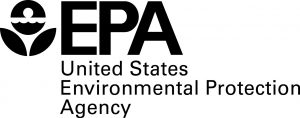 On Dec. 17, 2014, the U.S. Environmental Protection Agency (EPA) submitted a proposed rule to tighten the primary standard in the National Ambient Air Quality Standards (NAAQS) requiring that ground-level ozone be limited to within a range of 65 to 70 ppb from the current 75 ppb. But, some agriculture and forestry industry groups argue that the Agency should keep the current standards.
On Dec. 17, 2014, the U.S. Environmental Protection Agency (EPA) submitted a proposed rule to tighten the primary standard in the National Ambient Air Quality Standards (NAAQS) requiring that ground-level ozone be limited to within a range of 65 to 70 ppb from the current 75 ppb. But, some agriculture and forestry industry groups argue that the Agency should keep the current standards.
EPA has been working to strengthen the NAAQS ground-level ozone standards since 2011. The agency’s research suggests that the ozone restriction will make breathing easier for the public, particularly asthmatics and others who have lung ailments. However, according to a statement from American Forest & Paper Association President and CEO Donna Harman, the current standards are getting the job done.
“We’ve reviewed the science at length, and the fact is the existing standards are adequately protective and should not be tightened beyond the current 75 ppb at this time. EPA’s own evidence is limited and inconsistent across the available studies. Furthermore, the agency’s 2008 NAAQS have not been fully implemented to know the resulting benefits from that round of compliance. EPA should focus its efforts on completing the 2008 standards implementation before piling on more costly compliance investments that the science shows would have a negligible impact on overall air quality.”
The American Farm Bureau Federation (AFBF) also sent letters to EPA Administrator Gina McCarthy earlier this month warning that the agency’s proposal would damage agriculture and rural communities if implemented.
“EPA’s proposed ozone standards would limit business expansion in nearly every populated region of the United States. U.S. industry and agriculture, alike, will create fewer jobs and be less competitive in the world market if these proposals are implemented,” said Dale Moore, AFBF executive director of public policy. “The hardship to farmers, ranchers and rural America will be real and immediate, while the benefits are unverified and uncertain.”
Comments on the proposed rule ended on March 17. The Georgia Forestry Association will continue to monitor and report on this issue as it moves through each process. For more information on the proposed rule and supporting documents, visit http://www.epa.gov/groundlevelozone/actions.html.

